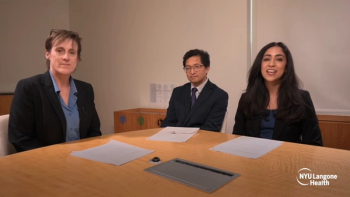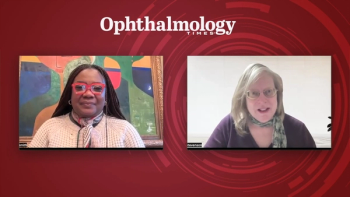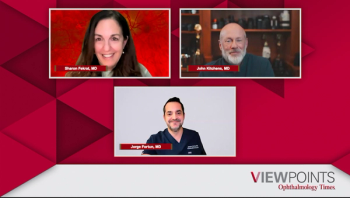
Opinion|Videos|May 27, 2025
IOL Selection for a Patient Seeking Spectacle Independence After Prior Radial Keratotomy
Author(s)Steven J. Dell, MD
A panelist discusses how he successfully treated a complex case of a 72-year-old patient with previous radial keratotomy by using an innovative combination of an Apthera lens in the bag and a light adjustable lens in the sulcus as a primary piggyback.
Advertisement
Video content above is prompted by the following:
Complex Case Study: Post–Radial Keratotomy (RK) Cataract Patient
Key Discussion Topics
- Complex post-RK case presentation
- A 72-year-old man with 16-incision RK performed 22 years prior
- Extreme refractive error (+8.00 with 5 D of astigmatism)
- Significant irregular astigmatism with central corneal power ranging from 28 to 36 D
- Surgical challenges
- Visual acuity (20/50) worse than expected for cataract density (appearing 20/25)
- Patient improved with pinhole, indicating irregular astigmatism
- Required intraocular lens (IOL) power (35-36 D) exceeded available Apthera lens maximum (30 D)
- Novel surgical approach
- Placement of Apthera IOL in the capsular bag
- Use of scleral tunnel incision due to 16-incision RK history
- Off-label placement of light adjustable lens in the sulcus as a primary piggyback IOL
Notable Outcomes
- Preadjustment refraction was +1.75 –4.00, a significant improvement
- After light adjustable lens adjustments, patient achieved 20/25 vision with minimal residual refractive error
- Similar piggyback approach with monofocal IOL plus light adjustable lens used successfully in the fellow eye
Newsletter
Don’t miss out—get Ophthalmology Times updates on the latest clinical advancements and expert interviews, straight to your inbox.
Advertisement
Latest CME
Advertisement
Advertisement
Trending on Ophthalmology Times - Clinical Insights for Eye Specialists
1
Innovations in glaucoma poised for breakthrough in 2026 (and what might hold them back)
2
FDA Clears IND application for GenEditBio’s GEB-101 in TGFBI corneal dystrophy
3
Rates of retinal layer thinning predict visual field progression in glaucoma
4














































